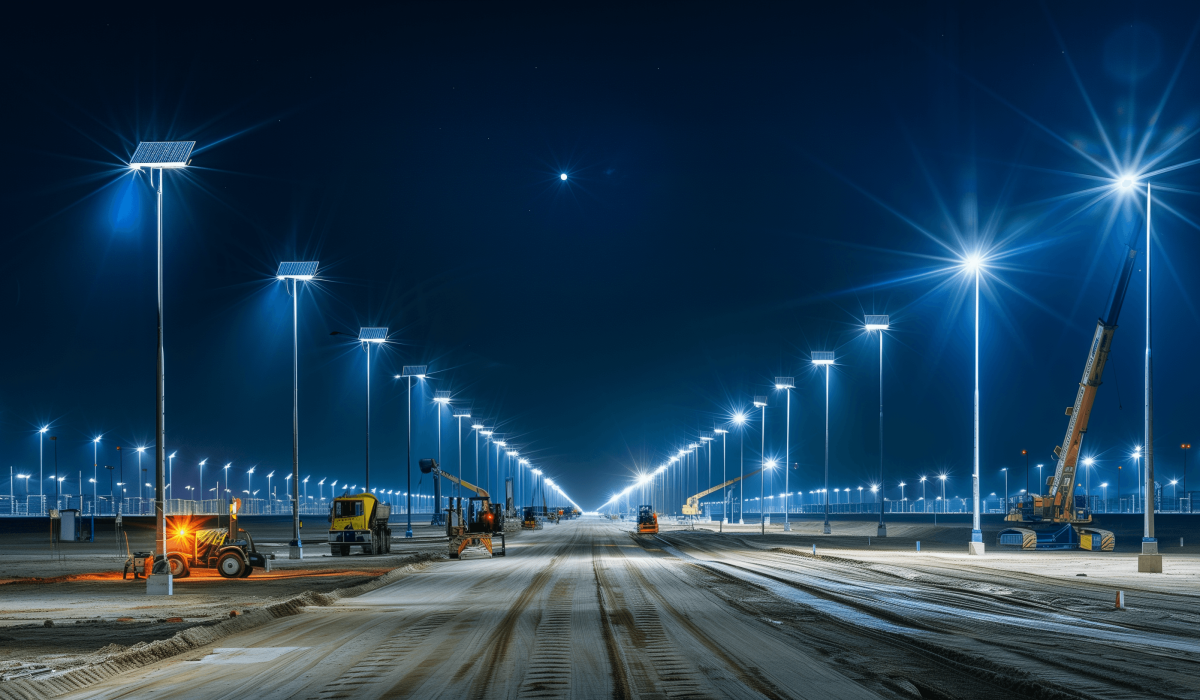Choosing the right material for street lights can be confusing. Are you worried about the durability of street light poles? Concerned about the maintenance costs and how long they will last? Perhaps you also want something that looks good in your neighborhood? You're not alone. Many cities face these exact challenges. In this article, we’ll explore the most common materials used for street light poles and help you make the right choice for your needs.
Street lights are typically made from materials like aluminum, steel, fiberglass, and concrete, each offering unique benefits in terms of durability, cost-effectiveness, and design.
Let’s explore these materials in more detail and help you choose the best one for your project.
The Importance of Material Selection for Street Lights
When it comes to street lighting, the material you choose directly impacts the pole’s performance, longevity, and maintenance costs. Poor quality materials can lead to frequent repairs and replacements, which means higher costs and headaches. Additionally, materials that aren’t suited for the local climate can corrode, crack, or wear down, leaving you with a less-than-ideal result. So, how do you avoid these issues? Understanding the pros and cons of each material is key.

Aluminum Street Light Poles
Aluminum is lightweight, durable, and corrosion-resistant. This makes it a popular choice for street light poles, especially in coastal areas or places where weather conditions can cause rust or corrosion. But it’s not just about function—it’s also about design. Aluminum poles have a modern, sleek look that suits a variety of environments, from residential streets to commercial areas.
Why Choose Aluminum?
- Corrosion-resistant: Ideal for areas with high humidity or salt air, meaning fewer repairs.
- Lightweight: Easier and cheaper to transport and install.
- Long-lasting: Aluminum poles can last for decades with minimal upkeep.
- Aesthetic appeal: Clean lines and modern design that enhances the look of your street.

Steel Street Light Poles
Steel poles are known for their strength and reliability, but they come with their own set of challenges. While steel is incredibly durable and can withstand harsh conditions, it’s heavier, more expensive to install, and prone to rust if not properly maintained. Steel poles are often the best choice for high-traffic areas where the poles need to support larger lights or signs.
Why Choose Steel?
- Strength: Can support heavier streetlights and signs.
- Durability: Steel is resistant to impacts and can handle tough environments.
- Versatile designs: Steel poles can be shaped into a variety of styles to fit your street's aesthetic.

Fiberglass Street Light Poles
Fiberglass might not be as common, but it’s a fantastic option for certain environments. These poles are lightweight, corrosion-resistant, and can withstand extreme weather conditions, especially in coastal areas or industrial environments where exposure to chemicals or salty air is a concern. Fiberglass poles are also low-maintenance and can be installed without much hassle.
Why Choose Fiberglass?
- Corrosion resistance: Perfect for coastal regions or areas with high chemical exposure.
- Low maintenance: Fiberglass doesn’t need painting or special care.
- Lightweight: Easy to install and transport, reducing overall costs.

Concrete Street Light Poles
Concrete is the heavyweight champion of street light poles. While it’s true that concrete poles are strong and durable, they can also be quite expensive and difficult to install due to their size and weight.
But for areas where long-term durability is crucial, concrete poles are an excellent investment. They are resistant to extreme weather and wear, making them ideal for rural or remote locations where other materials might not stand up to the test of time.
Why Choose Concrete?
- Strength and stability: Concrete poles are nearly indestructible and perform well in extreme conditions.
- Longevity: With proper care, concrete poles can last for decades without needing replacement.
- Ideal for remote locations: Perfect for rural areas where transport and installation costs are less of a concern.

Choosing the Best Material for Your Street Lighting Needs
Choosing the right material comes down to your specific needs. Here are a few key questions to guide you:
- What is your local climate like? Choose materials that will resist the weather in your area.
- What’s your budget? Materials like fiberglass and aluminum are more cost-effective in the long run because they require less maintenance.
- What’s the look you’re going for? Some materials like aluminum offer sleek, modern designs, while others like concrete offer a more solid, industrial look.
Conclusion: A Perfect Material for Every Need
No matter what material you choose, it’s important to make an informed decision based on your specific needs. Whether you're after durability, cost-efficiency, or simply a design that fits your street, each material has its strengths. Take the time to understand the pros and cons of each option, and you’ll be sure to choose the right material for your street lights.


